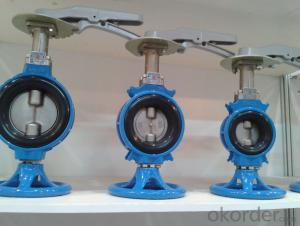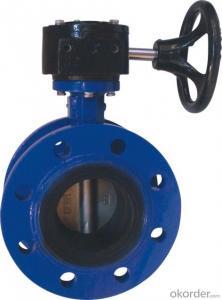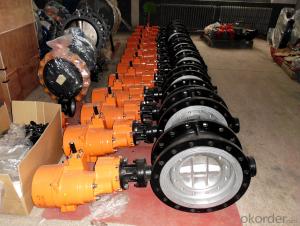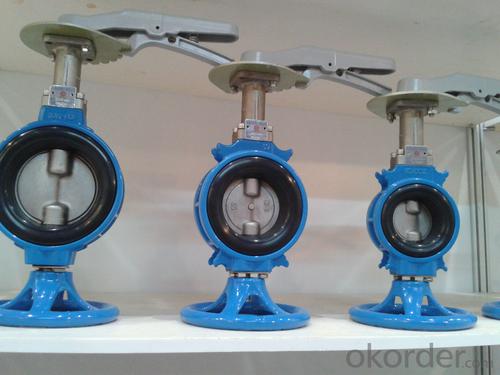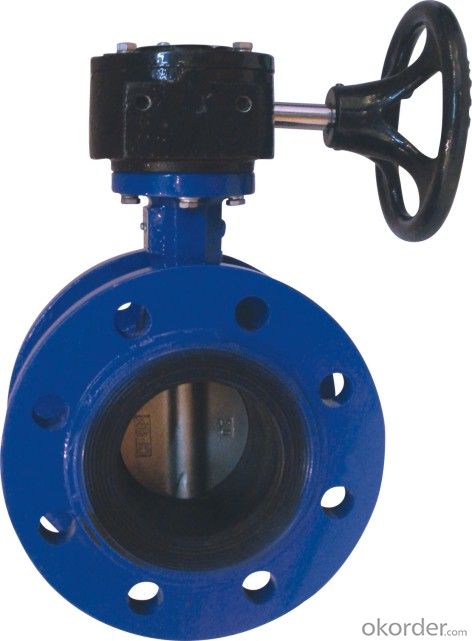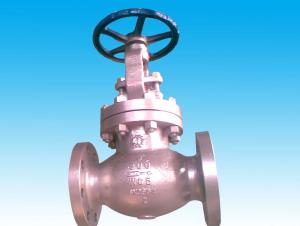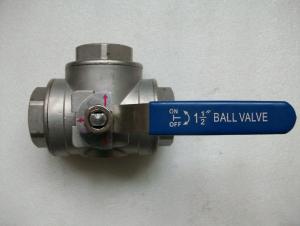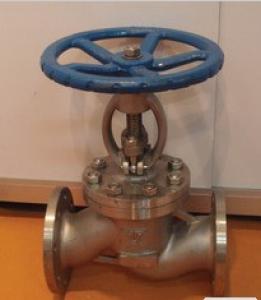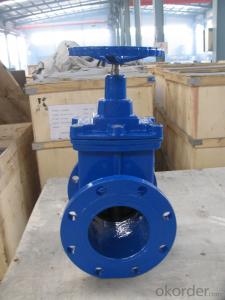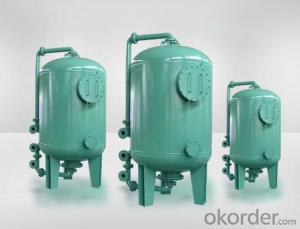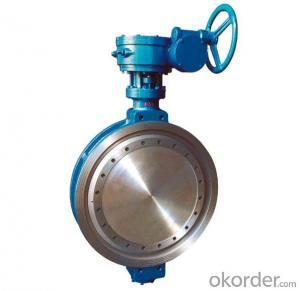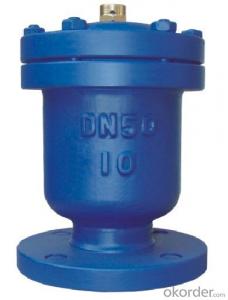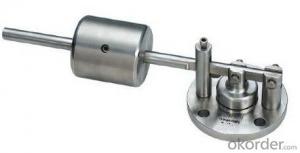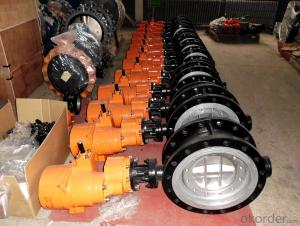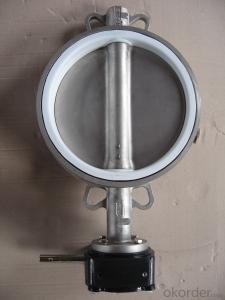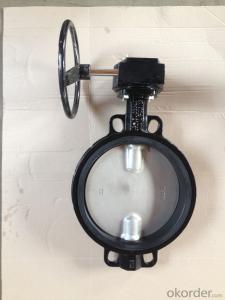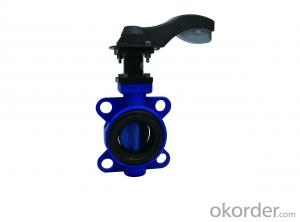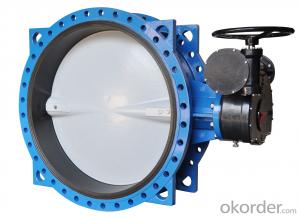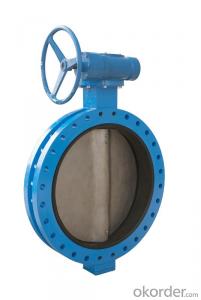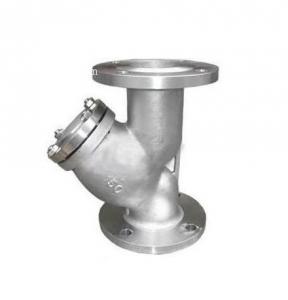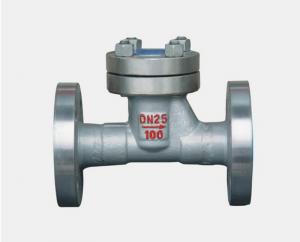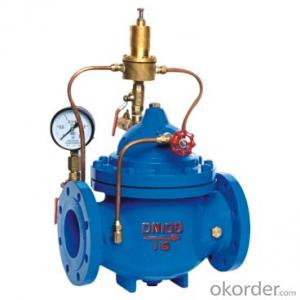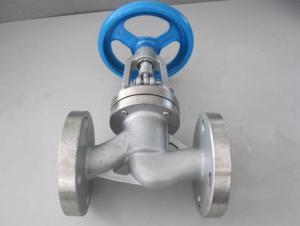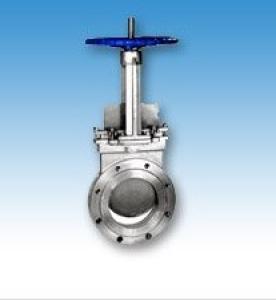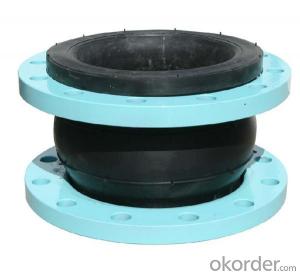Ductile Iron Butterfly Valve Made In China
- Loading Port:
- Tianjin
- Payment Terms:
- TT OR LC
- Min Order Qty:
- 50 set
- Supply Capability:
- 1000 set/month
OKorder Service Pledge
OKorder Financial Service
You Might Also Like
1. Manual Wafer Butterfly Valve Description:
A butterfly valve is a valve which can be used for isolating or regulating flow. The closing mechanism takes the form of a disk. Operation is similar to that of a ball valve, which allows for quick shut off. Butterfly valves are generally favored because they are lower in cost to other valve designs as well as being lighter in weight, meaning less support is required. The disc is positioned in the center of the pipe, passing through the disc is a rod connected to an actuator on the outside of the valve. Rotating the actuator turns the disc either parallel or perpendicular to the flow. Unlike a ball valve, the disc is always present within the flow, therefore a pressure drop is always induced in the flow, regardless of valve position.
2.Main Features of the Manual Wafer Butterfly Valve
a)Cast hole. Flange connection meet ANSI 125/150# DIN PN10/16 BS4504 PN10/16 in the meanwhile.
b)Soft seat. Replaceable. Increase of service life.
c)Double half shaft without pin.
d) Square and short neck. Easy to stick scutcheon and cost saving.
3. Manual Wafer Butterfly Valve Images:
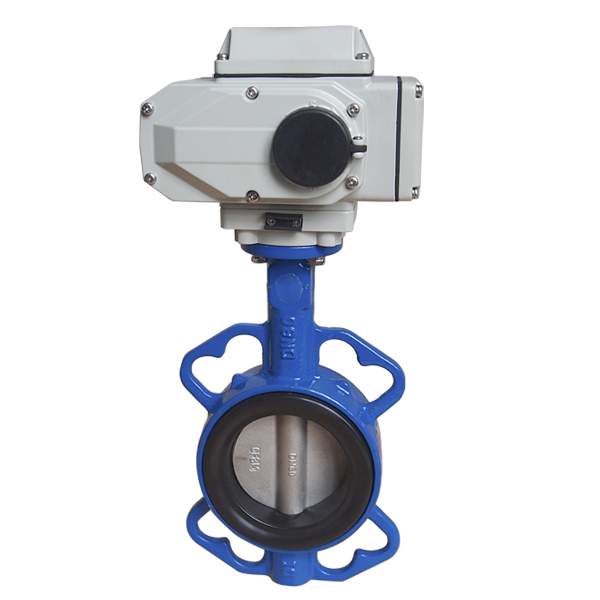
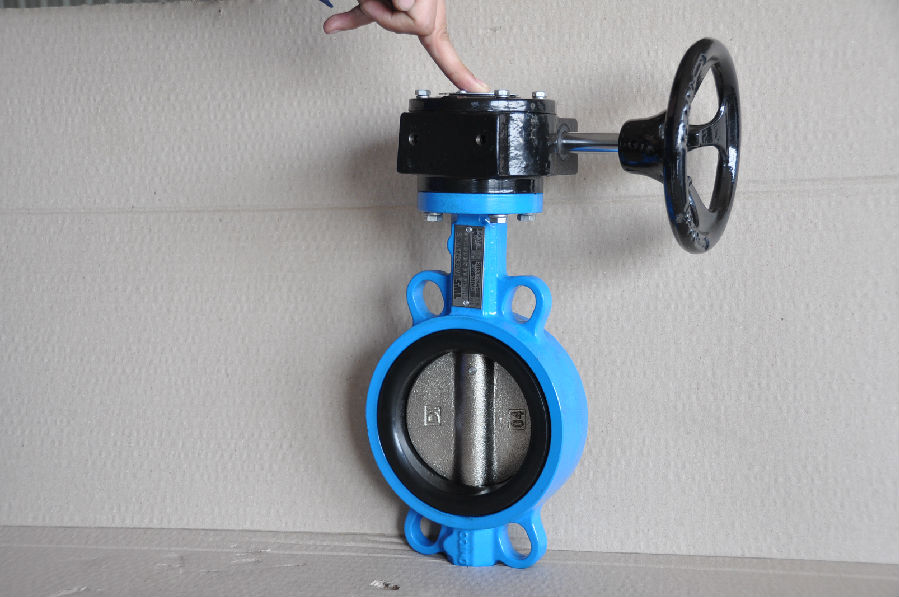
4.Manual Wafer Butterfly Valve Specification:
1)Size: DN40-DN1400
2)Material:body-CI/DI/WCB/SS
disc:DI/CF8/CF8M/C95400
3)Professional Maufacturer for more than 8 years
5.FAQ
1. What is manual wafer butterfly valve?
A: Wafer style is the more common of the two and is less expensive than the lug style. The wafer style butterfly valve is just about the standard. It ís so common that no one even bothers to use the word "wafer" when ordering a butterfly valve. It is taken for granted that if a butterfly valve is ordered, a wafer style will be received.
2. How about the Installation of the Wafer Style Butterfly Valve?
A: Butterfly valves are installed by inserting the valve between two flanges using bolts or studs and nuts to hold it all together. This type of installation, of course, makes it impossible to disconnect just one side of the piping system from the valve. That benefit is received using the lug style valve.
3. What is the working principle of manual wafer butterfly valve?
A: A butterfly valve is from a family of valves called quarter-turn valves. In operation, the valve is fully open or closed when the disc is rotated a quarter turn. The "butterfly" is a metal disc mounted on a rod. When the valve is closed, the disc is turned so that it completely blocks off the passageway. When the valve is fully open, the disc is rotated a quarter turn so that it allows an almost unrestricted passage of the fluid. The valve may also be opened incrementally to throttle flow.
- Q: What valve is the DN 25?
- This is only the aperture of the valve. It does not represent the form of the valve.
- Q: Can other valves be used instead of 10?
- An elbow, an outer wire, screw down the joint of the hose, the elbow is joined together.
- Q: What is called protective valve, and other valves what is the difference?
- Protection valve should be in the air defense valve, can be copper gate valve. (according to the specific use of civil air defense requirements, design institute does not count).2, while the protection valve should be a locking device with the valve, not the general valve can be replaced.
- Q: What does 1/2 mean in valve specification?
- 1/2 is the representative of American Standard size is DN15.
- Q: In the decoration, I do not know where to get the valve, what kind of products should be bought?It is hard to fit the valve in the water inlet of the house. If not, can you? Will it have any effect on future use?
- All inlet pipes should be fitted with valves, so if the faucet breaks, you'll know the benefits
- Q: Where is it installed, what is the role, what is the material, and are there other alternatives instead of this effect?
- Mainly from the role of sealing, to prevent leakage of the valve conveying medium, stuffing commonly used PTFE, graphite, asbestos packing three.
- Q: What is the flow medium of the valve?
- Just like the one in your bottle, then the medium in your bottle is water
- Q: Can the angle valve of York central air conditioner be replaced by other valves?
- Definitely. But I want you to tell me what you're doing, or give me a picture. I can give you some advice
- Q: What's the material of j41h-16p's valve?
- The j41h-16p valve is a stainless steel globe valve.The working principle of stop valve:The cut-off valve, also called the door, is the most widely used as a valve, it is popular is because the process of opening and closing the sealing surface friction between the small, more durable, highly open small, easy manufacture, convenient maintenance, not only for low pressure, but also suitable for high pressure.The closing principle of the valve is to rely on the valve bar pressure, so that the valve sealing surface and seat sealing surface close together, to prevent the circulation of media.The one-way valve can only medium flow direction when installing. The structure length of the stop valve is larger than that of the gate valve, and the fluid resistance is large, and the reliability of the sealing is not strong during the long-term operation.
- Q: What's the advantage of using three way valves?
- Three way valve generally has a cut-off, regulation, diversion, and prevent counter flow, voltage regulation and overflow and other benefits, because of its benefits more, so the use of the three valve is extremely extensive, in the valve industry is also very important.
Send your message to us
Ductile Iron Butterfly Valve Made In China
- Loading Port:
- Tianjin
- Payment Terms:
- TT OR LC
- Min Order Qty:
- 50 set
- Supply Capability:
- 1000 set/month
OKorder Service Pledge
OKorder Financial Service
Similar products
Hot products
Hot Searches
Related keywords
